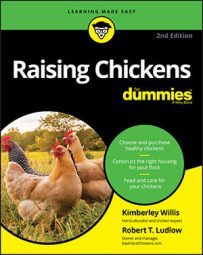As you explore the world of chicken breeds, you’re likely to come across a handful of commonly used terms: purebreds, hybrids, strains, mutations, and mixed breeds.
Purebred chickens
Purebred chickens are chickens that have been bred to similar chickens for a number of generations and that share a genetic similarity. If you breed two chickens from the same breed, you should get offspring that look much like the parents. If you own a backyard flock and want to produce new chicks every year from your flock, or if you’re interested in showing chickens, you’ll want to purchase purebred chickens.
While more than 200 breeds of chickens are known to exist, with many color varieties within those breeds, fewer than half of these breeds are common. In fact, the vast majority of chickens in existence today belong to one of just a few breeds — White (or Pearl) Leghorns, Rhode Island Reds, Cornish, and Plymouth Rocks — and crosses of those breeds.
These breeds comprise the commercial chicken industry for eggs and meat. The other breeds can thank small-scale chicken-keepers like you for their continued existence: Those independent chicken-keepers see value in maintaining genetic diversity and keep them from disappearing.
Hybrid chickens
Many common and well-known chicken “breeds” are not breeds at all, but hybrids. Hybrids result from crossing two purebreds. Animal breeders have long known that crossing two purebred animals of different breeds often produces a hybrid animal with good traits from both parents, along with increased health and productivity.
Hybrids are for end use — that is, they’re good for only one purpose. Hybrid chickens may produce the most tender meat in the shortest time or lots of big eggs. These birds can’t be bred to each other to produce a new flock: When hybrids are bred together, the results are unpredictable. Some babies look like one parent, and some look like neither. Thus, to maintain a supply of hybrid birds, you must raise two separate purebreds as parent stock.
Strains of chicken breeds
Both purebreds and hybrids can be further defined as particular strains. A strain is usually one breeder’s selection and is based on how that breeder feels the stock should look. Purebred strains represent the basic breed characteristics but may be slightly bigger, more colorful, hardier, and so on.
In the case of hybrids, the birds that result from mating two particular purebred birds may also be called strains if they’re produced by only a single company or breeder.
Strains are often named, especially if they’re produced in large numbers for commercial use. The Cornish and White Rock hybrid has several strains. Some have names, like Cornish X or Vantress, whereas others are identified by numbers. Some strains grow faster, some survive heat better, some have white skin, and so forth. The same genetics firm may offer several strains.
Mutations in chicken breeding
Occasionally, a mutation pops up, causing a chicken to look or act differently than the birds it was bred from. This scenario is nature accidentally rearranging genetic material. Mutations can be good, bad, or unimportant. Sometimes, with careful breeding, good mutations can turn into breeds.
Mixed chicken breeds
Just as the world of dogs has many mutts, the world of chickens has mutt chickens. Mixed-breed chickens are birds whose ancestry isn’t known, and they’re a combination of many breeds. Mixed-breed chickens can be a great way to start a home flock.
In fact, mixed-breed chickens often result from a chicken owner starting with a variety of purebred chickens and letting them breed. If you just want some average layers or chickens for that country feel, go with mixed breeds. The only problem is that if you don’t know the parents of a bird that turns out to be beautiful or very productive, you’ll have a hard time breeding more birds like it.
Over time, flocks of mixed-breed birds that are allowed to reproduce indiscriminately tend to produce smaller, less productive, and perhaps less healthy birds. The chickens tend to revert back to the size, color, behavior, and laying habits of their wild ancestors.

